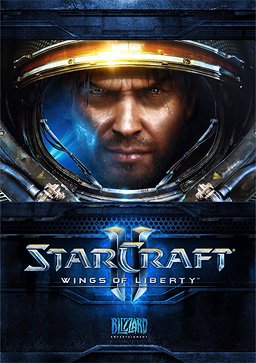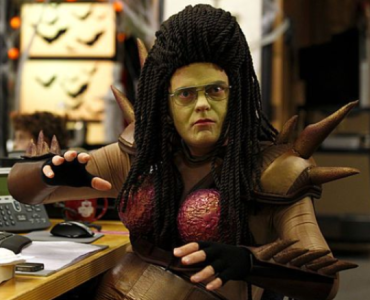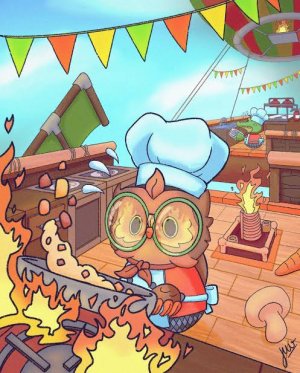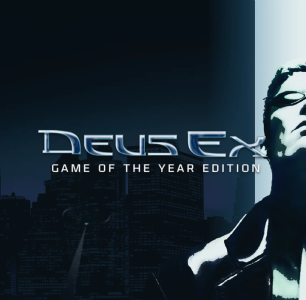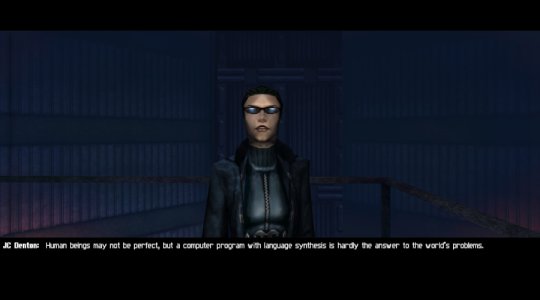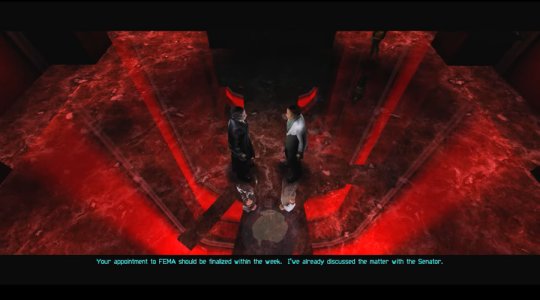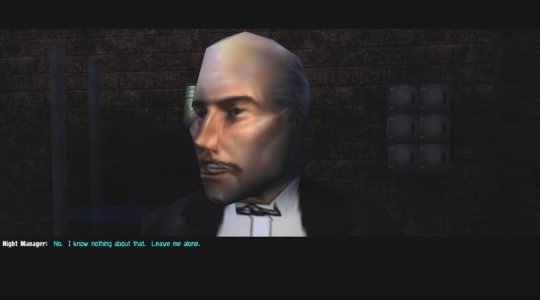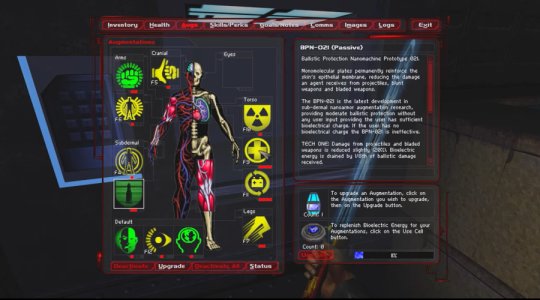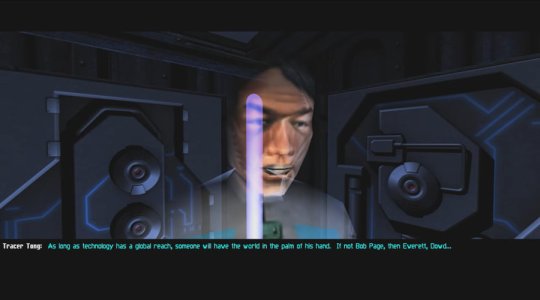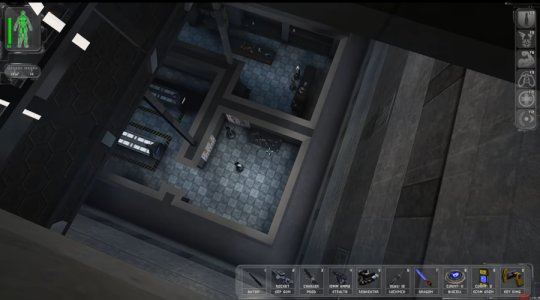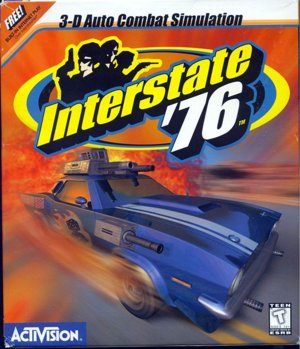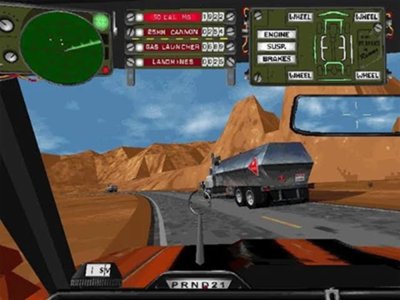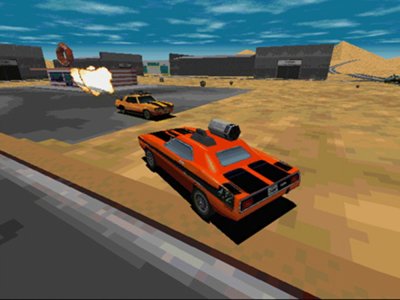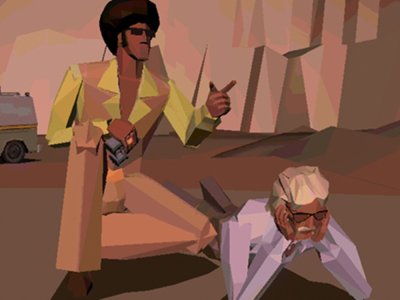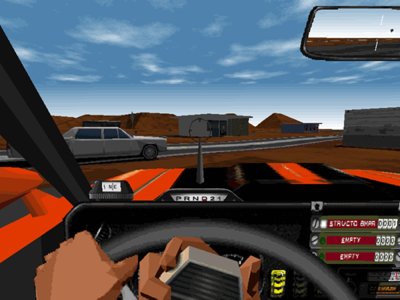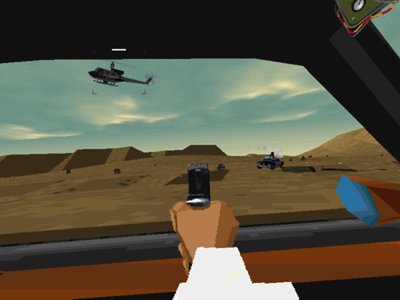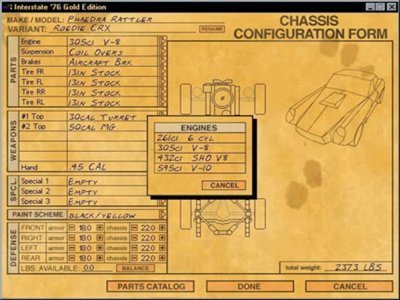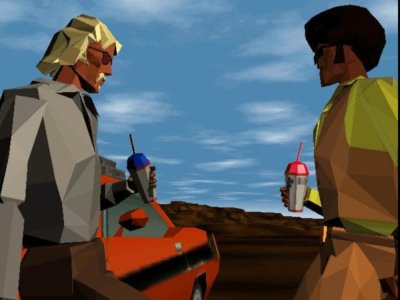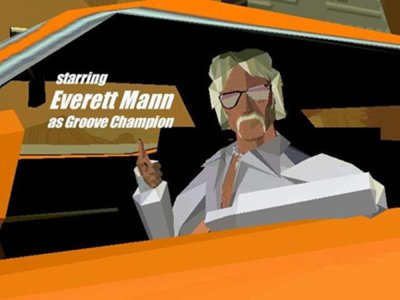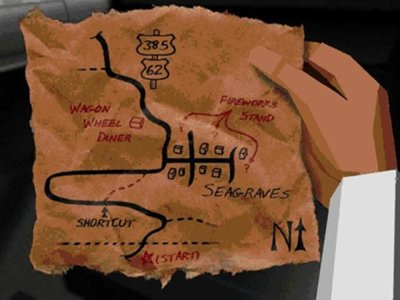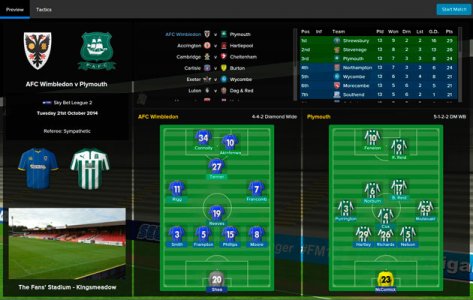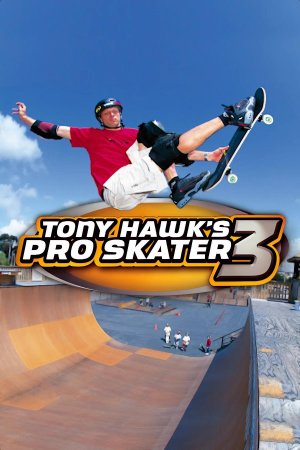Format: PC
Year of Release: 1997
Developer: Activision
Genre: Action / Vehicular Combat Simulation
Why I picked it: Art Design and Music
Somewhere in the Southwest...
It's 1976 and everything has gone sideways, or so the game's intro animation tells us. The design team needed something new to work on and in a flash of inspiration, lead designer Zach Norman decided to exchange the war-torn landscapes of the 31st century for the similarly empty (and easy to render) open vistas of the American Southwest. Muscle cars with gleaming candy-colored paint jobs take the place of mechs. An absolute murder's row of Bay Area based musicians was recruited to compose the all original funk soundtrack. Levels were built, dialog was written, voice actors were hired, and another PC game rolled off the assembly line and onto store shelves. End scene.
To fully understand why this game of all games is my 'Casablanca' of game design -- the one time where every single person in every single department just got it 100% right -- let me take you back to a different place and time, to April 1997 in a perfectly ordinary town called Citrus Heights, CA. The late 90s were a golden age for fans of PC games and my Mecca was Egghead Software on Greenback Avenue. You see, back in 1997 we bought our software programs at the store and they came packaged in big boxes -- LP sized boxes -- plastered with eye catching cover art. Some of them even had lavish gatefolds and spot UV coatings. They were lined up, covers out, for teenaged boys (and girls) like me to drool over and curse that our birthdays were 10 months away.
View attachment 13805 View attachment 13807 View attachment 13808
This was truly a time when the experience of reading about, buying, opening, installing, and then finally launching a new game could be obsessed over the same way our parents had obsessed over music. This context is important, I think, because the culture of game design -- computer game design -- was in a different place 30 years ago than where it is today. Budgets and design teams were smaller and a few visionary folks with an original idea didn't need the resources of a massive corporation to release their weird little product into stores. Though the era of corporate media consolidation was just over the horizon, it had not yet carpet-bombed the entire industry in creativity destroying profit motive. Indie developers still exist today, of course, just as they did back then but in 1997 an indie game built in someone's garage sat side-by-side on the same shelf and in the same sized box as the biggest and most lavish 100 person production. And both needed good word of mouth to sell.
By all accounts Interstate '76 was just another computer game, one of several hundred released in 1997, but to my eyes (and ears) this is as perfect a video game as has ever been made. While most games released in the same time period compensated for their lack of photo-realism with heavy doses of full motion video (with mixed results), a bold choice was made here to render everything, including the cinematic sequences and even the print ads, with the same heavily-stylized "proud to be polygon" graphics. That immediately gave this game it's own unique visual identity and looking back now I can see how influential this was as a test-case for turning a technical limitation into an artistic strength.
View attachment 13801 View attachment 13802 View attachment 13804
This was also the period of time where the bundled print manual included in the game box started to get more attention not just as a place to paste up control diagrams and designer credits (or for those a little older, as a place to hide the anti-theft code keys) but as a fully art designed part of the sensory experience. The first Diablo game also had a very nice print manual, as I recall. The one included in this game is easily my favorite of them all. It's mocked up like a driver's handbook and is even sized appropriately to be stuffed into a glove box. That same design philosophy is carried over into the oil-stained and coffee-ringed menu screens where you choose your car parts and salvage in a hand-written font for the in-game mobile mechanic Skeeter to assemble for you.
So far I haven't talked at all about the gameplay. It's similar to the approach pioneered by Hideo Kojima -- the story is spoon-fed to us through a combination of rendered cut-scenes which give way to in-game dialog (delivered via CB radio, naturally) which plays over the gameplay while we drive from location to location. There are some iterative improvements here as we get to choose our own camera angles -- switching at will from a driver's view behind the wheel to a third-person view which really shows off the car and makes it easier to see what's coming further up the road. While in the driver's view you can turn your head and look out either side window, which will cause your character to wield a pistol during car combat sequences. There are also some less useful angles like the locked-off wheel cam shots seen in every 'Fast and Furious' movie. It is occasionally useful to look back at enemies down your sidepanels, though when I tried that I would often drive into something and blow up. Keep your eyes on the road children!
View attachment 13798 View attachment 13799 View attachment 13800
More? Okay! Pressing 'M' on your keyboard will bring up a hand-drawn map of your current mission location. It's never more than scribbled road lines and a few landmarks, as was the parlance in a time before smart phones. Pressing 'N' will bring up a lined notepad where the game keeps track of your mission objectives and then crosses them out as you accomplish them with more hand-written font. Pressing 'P' will goad your partner Taurus to deliver one of his poems over the radio. Since this is a driving simulation you can also shift up or down, put the car into reverse, turn off the ignition (to hide from enemy radar, a nice touch), turn your headlights on or off, and naturally honk the horn. As in real life, this accomplishes nothing but you'll probably want to do it anyway.
Deep breath. Have I missed anything? A multi-player mode is included and had a brief run of popularity before modders / hackers boosted their cars with infinite armor or eschewed wheels altogether for turret-wielding helicopters which kinda soured the whole experience for everyone else. Oh and the music! Oh my god, the soundtrack to this game is an absolute revelation. Arion Salazar (the bass player from Third Eye Blind) put the band together which included members of Primus, Santana, and other notable touring bands. The whole thing was produced by Eric Valentine and actually did get released separately on compact disc (sadly no 8-track version is available that I know of). The music is a constant companion throughout driving missions as of course it should be. I can forgive the lack of in-game radio controls because why would you ever want to turn this off? The voice acting is also top notch, especially the actor who portrays Taurus -- though everyone involved probably owes royalties to Sam Jackson and Quentin Tarantino for the portrayal of that character.
I feel like I'm mostly done with video games at this point in my life, or rather I've transitioned into a period of time where I'm focused more on creating art rather than ingesting it. Steven Spielberg is fond of telling interviewers that he likes to re-watch the movie 'Lawrence of Arabia' right before he starts a new project to reorient himself toward his goal, similar to how a naval navigator would use the North Star. So I guess this is my version of that -- this is my North Star. A complete artistic achievement where every single component just fits together perfectly, the level of ambition is suitably matched to the capabilities of the team making it, and the end product is unabashedly and triumphantly proud to be exactly what it is for whomever out there digs this kind of 'ish.


